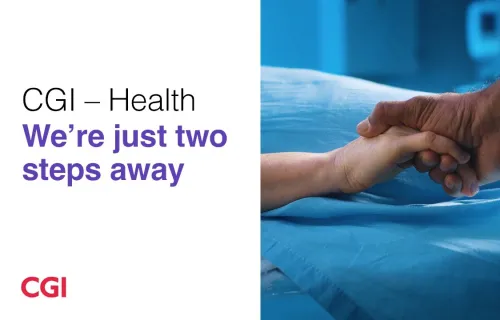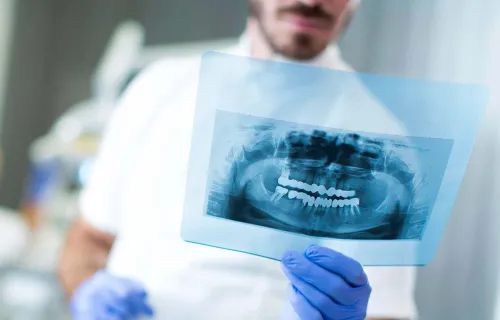The potential of automation, AI and emerging technologies to transform the patient experience
Whether it's a chatbot on a doctor's website or text updates on a medical insurance claim, emerging technologies like automation, artificial intelligence (AI) and machine learning are driving new solutions that are changing how we experience healthcare today. These innovative technologies are moving providers and payers closer to patients. They also are enabling more patient-centric healthcare by eliminating manual back-office tasks, using health data to uncover fresh insights, and freeing providers to focus on what they do best—caring for patients.
Digital acceleration and “continuum of care” are top of mind for health industry leaders
At this year’s Health Information and Management Systems Society (HIMSS) global conference, one of the biggest themes was speed. Patient needs are evolving quickly, and payers and providers are under pressure to cut costs while delivering in-demand digital innovations. Industry leaders are focused on how to accelerate speed to market, speed to value, and speed to impact for their products, services and innovations.
Another topic of interest was “continuum of care”—how to ensure smooth coordination of services and providers for a more seamless healthcare experience. In the U.S., for example, while the HITECH Act in 2009 dramatically accelerated the adoption of electronic medical records, the industry continues to face challenges in aggregating data from so many separate systems to create a holistic health picture.
Executives in healthcare recognize that automation can help address these challenges. According to CGI’s 2023 Voice of Our Clients research, improving care is the top business priority, requiring digitization and automation, which ranked as the top IT priority.
The potential of automation in healthcare
Speeding up routine tasks and improving accuracy
Automation has vast potential that we've only begun to capture. It can take over and speed up routine tasks like data entry and documentation with fewer errors, freeing up administrative teams to focus on higher-value work. A great example is prior authorization from insurers, which is traditionally a time-consuming and onerous task for both providers and payers. To gain authorization from an insurer on any given procedure or treatment, providers need to gather and share large amounts of data. Requirements vary, but they often include medical records, diagnosis codes, treatment plans, and other information. If automation could be applied on both sides of this process—data gathering on the provider side, review and authorization on the payer side—many hours could be saved and instead spent on patient care.
Driving better health outcomes
Even more exciting is automation's potential to drive better health outcomes. With a more seamless exchange of data between disparate systems, providers get a clearer picture of a patient's entire health journey, starting with wellness. AI-assisted analysis of that data can reveal patterns, predict outcomes, and even identify related risks, such as a patient's access to food and reliable transportation to get to their appointments. All of this information helps providers and payers make smarter decisions and deliver better end-to-end care.
The future of automation in the health industry
Within the next 10 years, automation, AI, and machine learning will move beyond back-office processes and into all corners of operations and the patient experience. For example, supply chains will be better managed because providers will be able to spot potential supply and equipment shortages before they happen.
On the patient side, healthcare will continue to gain more exposure to things like generative AI, robotic-assisted surgeries, telemedicine, personal health monitoring via wearable devices, and more, including processes to ensure responsible use of such technologies. Of course, nothing will ever fully replace the value of in-person, empathetic care from health professionals. The future of healthcare will be a combination of all these things, working in concert toward a common goal of delivering highly personalized, end-to-end patient care.
Common roadblocks to implementing automation
The biggest challenge healthcare providers and payers face when implementing automation is the lack of a high-level technology strategy. We often see many one-off solutions developed to solve a specific problem. Over time, the result is duplicative solutions that don't "talk" to each other and don't have a support model in place. It’s essential to have an executive sponsor who understands these technologies and has a strategic roadmap for implementing them thoughtfully.
Helping our healthcare clients unlock automation's potential
At CGI, we combine our solid methodology and extensive industry expertise to provide a holistic approach to automation implementation. We help assess an organization's needs and any pilot solutions they've developed to identify opportunities to consolidate or amplify that work.
Our managed services, like CGI Accel360 powered by UiPath, help organizations speed up their adoption of automation without taking on excessive overhead or managing the platform. As a subscription-based service, it accelerates setup, increases security, and allows our clients to realize the benefits of intelligent automation much faster.
Learn more about CGI's services and solutions for health and automation with CGI Accel360.
Learn more about how CGI is empowering healthcare organizations to optimize operations and improve patient outcomes through the responsible use of AI





